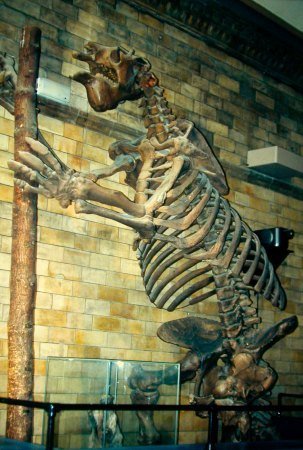
Skeleton of a giant sloth in the National History Museum te
Londen.

Bells were ringing in Darwin's head because it seemed that giant (now extinct) animals had been living in South America in the past, which had smaller relatives populating the same continent nowadays.
The crew was not happy when Darwin loaded his many crates on deck of the small Beagle, but with his natural charm he succeeded in keeping the atmosphere pleasant. Meanwhile he asked himself what the relation was between these giant animals and their modest, still living relatives. Why and how had they died out? He didn't believe in the Flood. He did understand that species could become rare and he could also imagine them becoming extinct.
From this fruitful place on he travelled over land to Rio de Janeiro, 400 miles. During this trip he came in touch with general De Rosas, a rebel leader, who gave him a pass with which he could continue his journey. He lived for weeks from the animals he was shooting.
Know more?
Giant sloth